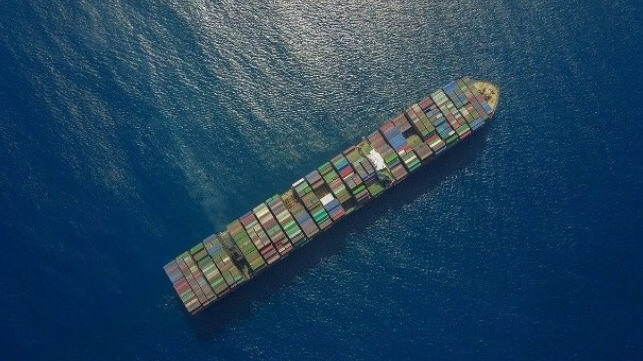Sea-Intelligence: Low Vessel Utilization Does Not Support Higher Rates

With global demand continuing to decline from shippers while the carriers have so far maintained their capacity, the analysts at Sea-Intelligence are warning that vessel utilization will remain low. Further, they warn that the imbalance between demand and capacity means that there is no structure to main freight rates. This comes even before an onslaught of new tonnage and increased capacity is expected to hit the container shipper segment in 2023.
“Global demand continues to decline, and whether we calculate the growth in TEU*Miles or as an annualized percentage over 2019,” comments Alan Murphy, CEO of Sea-Intelligence in their latest report. “One thing is very clear, the supply/demand balance is under a lot of pressure.”
Sea-Intelligence writes that the latest demand data from Container Trade Statistics (CTS) shows that in August 2022, the annualized growth over 2019 was below the level seen in 2019, “which means that unless carriers reduce capacity substantially, vessel utilization will be low.”
The analysts report that to maintain the ultra-high spot rate levels, a nominal utilization above 92 to 93 percent needs to be sustained on transpacific routes, with the threshold on Asia-Europe being 85 percent. For the transpacific service, Sea-Intelligence calculates that utilization dropped below 90 percent for much of 2022, becoming a catalyst for the continued freight rate drop. In August, they note that utilization crossed the 90 percent mark, but only just, still falling short of the 92 percent threshold to indicate a rate increase.
Their analysis corresponds with the persistent reports of a drop in spot prices. The steepest declines have come on Pacific routes between Asia and the U.S. West Coast but have also spread to other major routes such as between Asia and Europe. Sea-Intelligence has said it expects the price competition between carriers to intensify further in the coming weeks.
On the Asia-Europe routes, they site that utilization has been dropping even further recently. Utilization on Asia-Europe they calculate has been consistently below the 85 percent threshold to trigger a rate increase, and although the utilization improved two percentage points in August to 74 percent versus July, the rolling two-month average they note dropped a further three percentage points to 73 percent.
“This latest data simply reconfirms what has been the case since Spring 2022, i.e. there is no underlying structural support for the high rates on Transpacific and Asia-Europe,” concludes Murphy.
With utilization already at low levels, the industry is also looking toward the orderbook. The containership orderbook stands at a total of 7.1 TEU, according to Alphaliner. They highlight that the previous peak was 14 years ago at 6.6 million TEU.
“A huge number of new large containerships are going to hit the water at a time of stagnating demand,” warned Alphaliner in a report at the beginning of the month. “The market could struggle to absorb all these new ships,” they predicted.
Analysts note that the majority of the new capacity is due to enter the market in the next two years. Last year and this year, about 1.1 million TEU entered the market each year. By comparison, Alphaliner expects approximately 2.3 million TEU to arrive next year and an even higher 2.8 million TEU in 2024.
The current low utilization rates could be further exacerbated by the dramatic capacity coming from the newbuilds. Some carriers such as Maersk have said their new tonnage is planned as replacements for older vessels, but analysts are beginning to speculate in the current environment if there will be a rush to layup or possibly retire older vessels to rebalance the markets.
